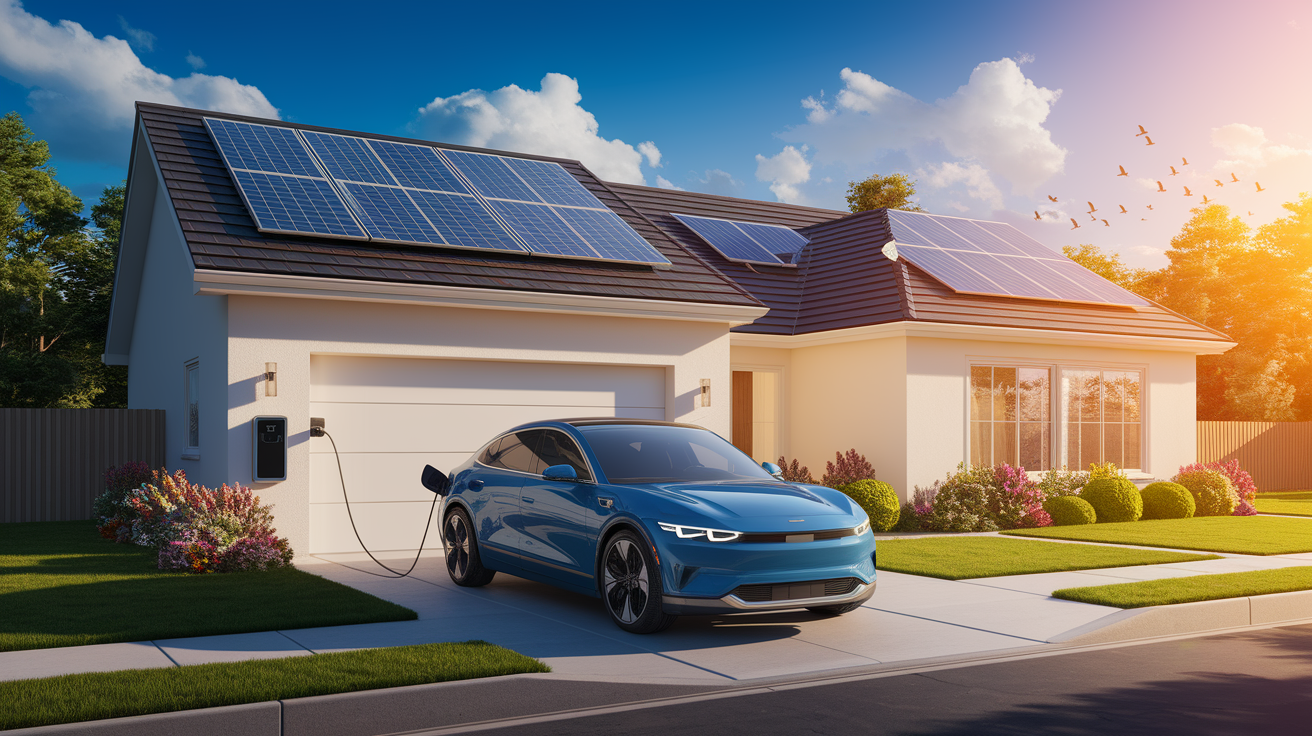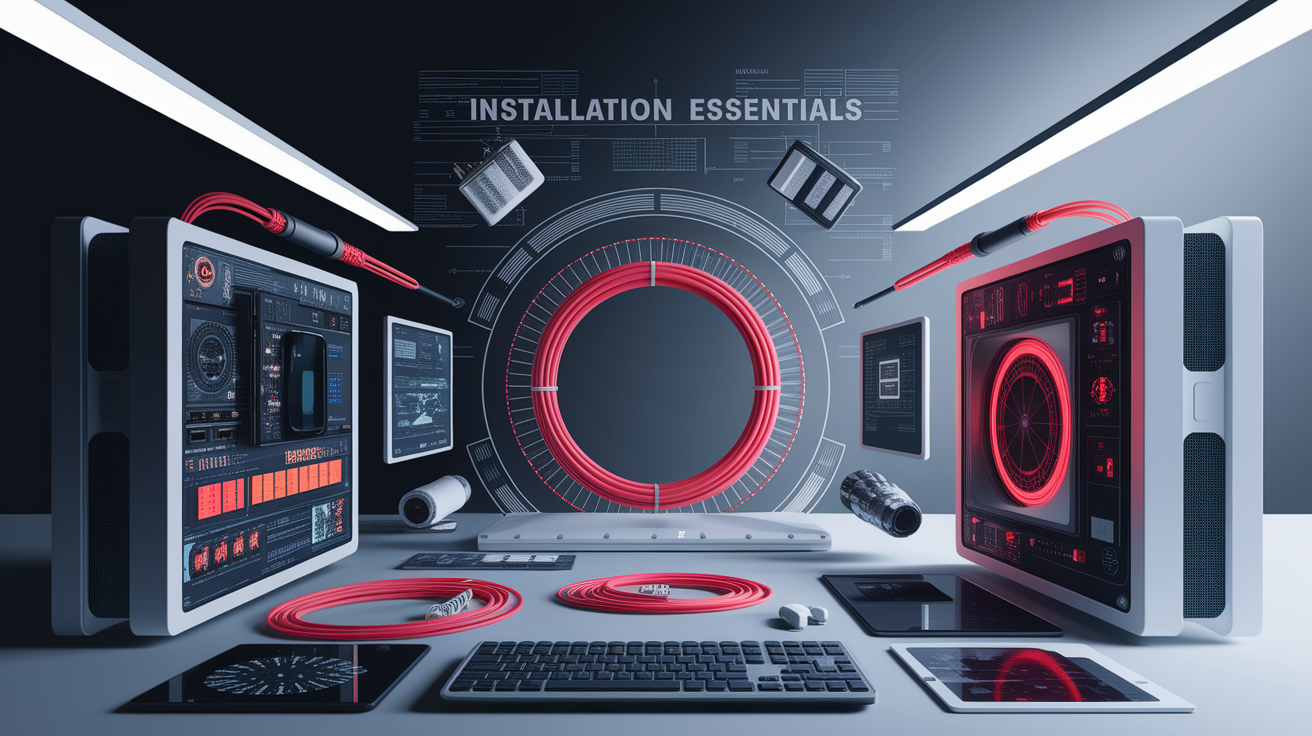Sun-Powered EV Charging: Integrate Your Vehicle with Home Solar
Sun-Charged Beginnings: Powering Your EV with Home Solar
Integrating your electric vehicle (EV) charging with a residential solar panel system is no longer a niche, experimental concept—it’s becoming a mainstream choice for homeowners seeking clean, affordable, and reliable energy. By pairing an EV charger with your home solar photovoltaic system, you can harness renewable energy generated on your rooftop to drive daily commutes without pulling from fossil fuel–powered grid electricity.

This approach not only reduces your carbon footprint but also delivers long-term cost stability. According to the U.S. Department of Energy, solar can lower electricity bills by 20–30%, effectively locking in low-cost charging for decades. Add energy storage into the mix and you can even charge during grid outages or peak demand, enhancing both sustainability and energy independence.
Selecting the Right Gear
Choosing the right components is key to achieving optimal results from a solar-powered EV charging setup. At a minimum, you will need:

- Solar Panels: High-efficiency modules sized to meet both household and EV charging needs. The exact number depends on your vehicle’s battery size and daily driving distance.
- EV Charger: Level 2 chargers (240V) are common for home setups, offering faster charging compared to standard 120V outlets.
- Solar Inverter: Converts direct current (DC) from the panels into alternating current (AC) for your home and EV charger.
- Energy Management System: As described in industry integration guides, this technology prioritizes solar usage, schedules charging during peak generation hours, and can manage multiple EV loads.
- Battery Storage (Optional): Stores excess solar electricity for use at night or during outages—ideal for off-grid or peak-demand scenarios.
Integration-friendly chargers and grid-tied solar solutions ensure compatibility and make it easier to capture all available clean energy for vehicle charging.
Installation Essentials
Whether you’re retrofitting an existing solar array or starting from scratch, installation should be handled by certified professionals with experience in residential solar and EV integration. Key steps include:

- Assessing your energy usage and EV charging requirements to size the solar system appropriately.
- Configuring the solar inverter and charger for seamless operation within your home energy system.
- Ensuring compliance with local codes, utility interconnection standards, and net metering policies.
- Testing smart charging functionalities to confirm they align with your driving and solar production patterns.
Proper wiring, load balancing, and system commissioning are essential to ensure safety, efficiency, and longevity of both the solar and EV charging components.
Maximizing Efficiency and Savings
A well-designed solar-augmented EV charging system can substantially reduce operating costs. To make the most of it:

- Leverage Time-of-Use Rates: Program smart chargers to avoid high-utility-rate periods when solar isn’t producing.
- Optimize Charging Schedules: Charge during peak solar generation hours to maximize consumption of your own renewable energy.
- Monitor System Performance: Use energy management platforms to track solar output, EV charging patterns, and net metering credits in real time.
- Integrate Battery Storage: Store solar energy in a home battery for overnight or emergency charging.
Following strategies outlined by renewable energy experts can further improve energy independence and reduce reliance on grid electricity.
Costs, Incentives & Payback
While upfront expenses for solar panels, an EV charger, and potential battery storage can be significant, incentives drastically improve return on investment. The U.S. federal Investment Tax Credit (ITC) currently covers up to 30% of solar installation costs, and EV purchases may qualify for credits up to $7,500. Certain states and utilities offer additional rebates for EV chargers and solar-plus-storage systems.
Declining solar panel and battery prices, along with market trends driving clean energy adoption, shorten the payback period. In many cases, homeowners see break-even points within 6–10 years, with free or significantly reduced vehicle “fueling” thereafter.
Final Thoughts: Driving into a Brighter Future
Integrating solar-powered EV charging is more than a convenience—it’s a transformative step toward sustainable living, energy cost control, and environmental stewardship. By aligning your transportation and home power systems, you turn every mile driven into a statement of energy independence and forward-thinking responsibility.
With technology maturing, costs falling, and robust incentives in place, now is an excellent time to explore how renewable energy systems can support your mobility needs. The road ahead is electric and sun-powered—position yourself to travel it efficiently, cleanly, and economically.







